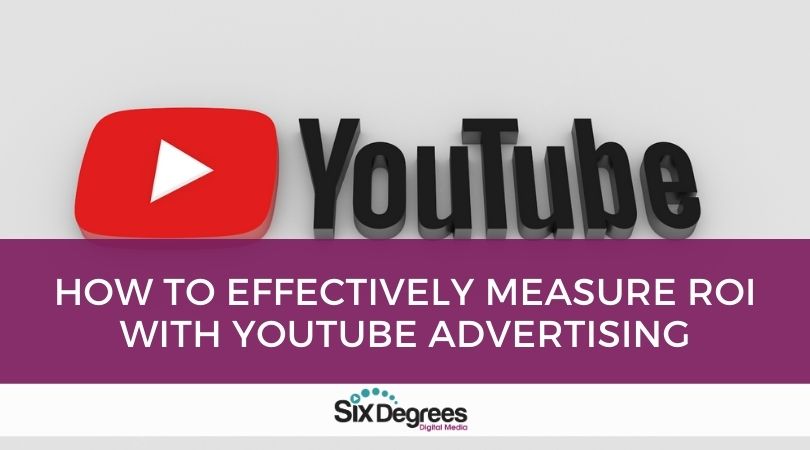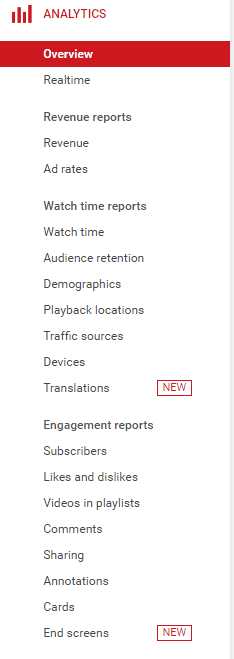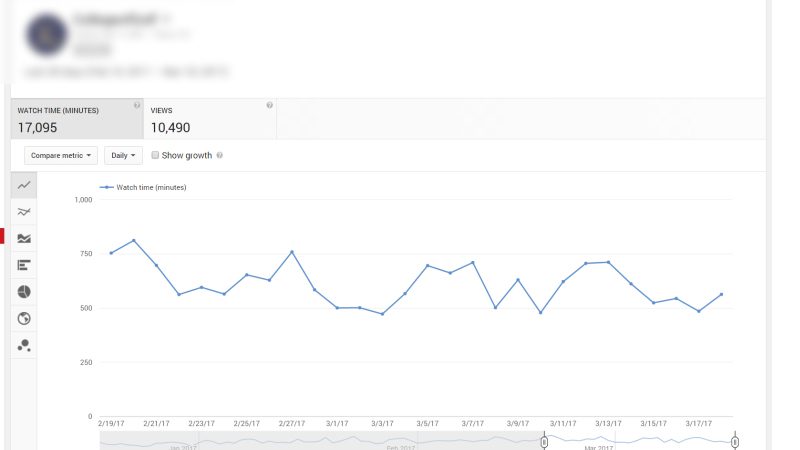Want to know if our video marketing is paying off?
Every like, share, and click-through represents an opportunity to understand more about how people respond to us. The problem is that, at first, working with this data can feel overwhelming.
Let’s simply do that for you.
The main process you want to follow is knowing the goal of your video, choosing the right metrics for those goals, monitor and measuring those metrics and making necessary adjustments for future videos.
With a little guidance, it isn’t so hard to understand.
In time you can become very effective at measuring your video marketing ROI.
What is the goal of the video?
If you want to make sense of your data, you need to start with a goal.
You don’t need to get super specific at first.
Narrow it down to a single easy metric.
Here are a few options to choose from:
- Video Likes & Shares, comments
- Click-throughs to your landing page or website
- Email Signups/conversions
- Purchases
- YouTube Subscribers
There are a lot of options.
Narrow it down to one and keep moving.
The thing you need to remember is you need to use the right video with the right goal.
If your video wasn’t designed with the proper goal in mind, your metrics probably won’t look as strong.
For instance, if your goal is to get more people on your list, you have to have a great offer and your video needs to speak to the benefits of that offer and have a strong call to action.
If your goal is to get more views and engagement to build your brand, your video should focus on one main point such as a “how-to” or tell a particular story that will resonate with your audience.
But you will want to be sure to tell your viewers to leave comments and invite them to engage at the end of your video.
Basic metrics
There are many options for paid services that can be used to upload, manage, and analyze your videos.
To be honest, they are not necessary until you become very advanced in this area.
The free built-in analytic tools from YouTube are really all you need for basic metrics.
Google Analytics offers additional information for visitor behavior on your website as well.
After you pick your most important metric, it’s easy to start tracking it.
Use the built-in tools for a weekly data checkup.
Focus mainly on your core metric, but feel free to investigate other metrics to get a feel for other valuable data and how you can use it to improve your campaign.
As you become proficient, analytics becomes second nature and will take much less time to review.
Start by going to your “Creator Studio” page on YouTube.
This can be accessed from within your YouTube account by clicking on the channel icon on the upper-right corner of the screen. In the left-side panel of options, click on “analytics” and then “overview”.
Here is a list of metrics you see data about.
If you are anything like me, you spend a lot of time looking at your data.
It’s how we learn what’s working right.
The first few statistics, complete with graphs, are:
- Watch time – shows you how many total hours were spent by people watching your videos each day.
- Average “view duration” indicates the average time spent by one viewer on your videos.
- Views – represents the total number of times your video was opened in a web browser or app.
Other items you may find useful are:
- Location of viewers
- Gender and age
All of this information can assist you with how you develop future videos.
Measuring your metrics for ROI
One of the things you have to know in order to gauge your ROI is what the metric is worth to you.
For instance, if you want leads, what are you willing to spend per lead?
What percentage of people who click through to your site fill out your form?
Of those, how many of those people buy from you?
Then you can use your video metrics to see if you are hitting the benchmarks for your goals.
If you are working more towards building up your brand and checking on the level of engagement, that is going to be a little trickier to come up with an exact number.
It boils down to what you are willing to spend for that engagement.
Video ads on YouTube are still relatively inexpensive so you can set whatever budget you like.
If you are running video ads to bring someone to your channel, make sure you have the right call to action at the end of your video.
Tell the viewer to subscribe, which is easy to do with the new end slides inside YouTube.
Another thing you can do is check your top three competitors.
Try to look for those that have more market share than you do, or close to yours.
Look at their YouTube channel to see what metrics you can check such as number of subscribers (if they have that public), number of videos, video views, and engagement.
If they have a strong presence on YouTube, chances are they are getting something out of it or they would continue spending resources creating video.
Get a feel for what’s working for them and see what you can use those ideas for your own campaigns.
Tweaking your campaign based on your metrics
Once you’ve had a chance to sink your teeth into the metrics, you’ll be able to use this data to design future videos.
If you find people are dropping off at the three-minute mark and you made a five-minute video, shorten your next videos to three minutes.
If you find that people are responding to a specific topic, try to make more videos around that topic.
For instance, if you are in the mental health industry and have videos about dealing with depression or anxiety, family cohesiveness, troubled teens, and dealing with grief but you find that one particular subject is what people are responding to the most, then make more videos on that subject.
Give your audience what they want.
The most important thing is to locate your key metrics for each video (and remember the metric may be different depending on the goal of your video) and check that weekly.
Recap
Effectively measuring the ROI of your video marketing is all about defining the goal of your video, choosing the right metrics to measure, consistently monitoring those metrics, and making adjustments to future videos based on what you learn.
If you find you need assistance with your video marketing campaign, Six Degrees Digital Media is here to help.









